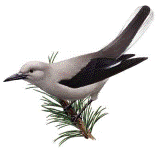Papers in the Biological Sciences
Document Type
Article
Date of this Version
2003
Abstract
Although social play is broadly distributed among mammals, it is infrequently encountered in other vertebrate taxa. It is, however, displayed in a fully realized and complex form in several groups of birds. Unambiguous accounts of social play have been recorded from thirteen species of parrots, seven species of corvids, and several hornbills and Eurasian babblers. We conducted an analysis of the avian play literature, testing for differences between avian taxa, as well as for correlations between play complexity, brain size, and age of first reproduction. Corvids were far more likely to show social object play than parrots. Corvids, parrots, and hornbills had larger relative brain sizes than would be predicted from a class-level allometric regression, but brain size was not associated with the complexity of social play among genera within taxa. Play complexity within parrots and corvids was, however, significantly associated with the age of first reproduction. The likelihood of complex social play appears to increase when delayed reproduction is accompanied by persisting relationships between adults and post-fledging juveniles. The adaptive significance of social play in birds thus offers intriguing parallels to similar analyses in mammals.



Comments
Published in Behaviour 140 (2003), pp. 1091-1115. Copyright © 2003 Koninklijke Brill NV, Leiden. Used by permission.